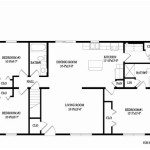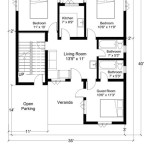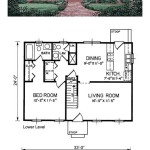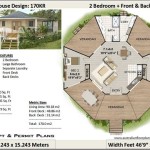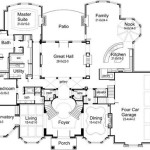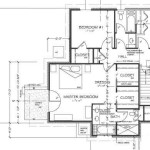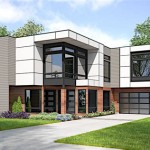House Plans With In-Law Suite on the Main Floor and Basement Plan
The rising cost of living and a growing desire for multi-generational living arrangements have fueled a significant increase in demand for house plans incorporating in-law suites. These suites, also known as accessory dwelling units (ADUs), offer a private living space for family members, such as aging parents, adult children, or other relatives, while still maintaining connection and proximity. Integrating an in-law suite on the main floor and including a basement plan provides flexibility in design, functionality, and accessibility, catering to a diverse range of needs and preferences.
This arrangement balances independence with interdependence, allowing multiple generations to share expenses, provide mutual support, and maintain their individual lifestyles. Careful planning and design are crucial to ensure the in-law suite blends seamlessly with the main house, provides adequate privacy, and adheres to local zoning regulations and building codes.
This article will explore the key considerations and benefits of house plans featuring an in-law suite on the main floor coupled with a basement plan, detailing the various design elements, accessibility factors, and legal compliance aspects involved.
Benefits of Main Floor In-Law Suite Placement
Locating the in-law suite on the main floor offers a multitude of advantages, primarily focused on accessibility and convenience. Main floor placement eliminates the need for stairs, making the suite suitable for individuals with mobility limitations, such as elderly parents or those recovering from injuries. This feature contributes to a more age-friendly and universally accessible home design.
Beyond accessibility, a main floor suite provides a greater sense of independence for the occupants. They can easily access the main living areas of the house without having to navigate stairs, fostering social interaction and a sense of belonging. This proximity can also be beneficial for caregiving situations, allowing family members to provide assistance more readily when needed.
Furthermore, a main floor in-law suite can be designed with its own private entrance, allowing for independent access and egress. This feature is particularly important for maintaining privacy and autonomy for the suite occupants. A separate entrance can also be valuable if the suite is ever used as a rental unit in the future, providing a clear distinction between the main house and the ADU.
Noise reduction is another key consideration. By strategically locating the in-law suite away from high-traffic areas of the main house and incorporating soundproofing measures, designers can minimize noise transfer and create a more peaceful living environment for all occupants.
Key Design Considerations for In-Law Suites
Designing an in-law suite requires careful consideration of several factors to ensure it meets the specific needs of the occupants and integrates seamlessly with the main house. The suite should function as a self-contained living unit, typically including a bedroom, bathroom, living area, and a kitchenette or full kitchen.
The size and layout of the suite will depend on the available space and the needs of the occupants. Minimizing hallways and maximizing usable floor space can create a more spacious and comfortable living environment. Universal design principles should be incorporated throughout the suite, including wider doorways, grab bars in the bathroom, and adjustable countertops, to ensure accessibility for individuals of all abilities.
The kitchenette or full kitchen should be equipped with essential appliances, such as a refrigerator, microwave, and stovetop or cooktop. Sufficient counter space and storage cabinets are also crucial for food preparation and storage. The bathroom should include a walk-in shower or a roll-in shower, depending on the mobility needs of the occupants. A comfort-height toilet and grab bars should also be included for added safety and convenience.
Natural light and ventilation are essential for creating a comfortable and inviting living space. Incorporating large windows and skylights can maximize natural light, while ensuring adequate ventilation can help maintain air quality and prevent moisture buildup. A private outdoor space, such as a patio or balcony, can also enhance the suite's appeal and provide a connection to the outdoors.
Integration with the main house's architectural style is important for maintaining a cohesive aesthetic. The in-law suite should blend seamlessly with the existing house design, using similar materials and finishes. However, it is also important to create a sense of separation and privacy, both visually and acoustically.
Integrating a Basement Plan with the In-Law Suite
Incorporating a basement plan into a house design with a main floor in-law suite can significantly enhance the overall functionality and value of the property. The basement can serve as a shared space for both the main house and the in-law suite, providing additional living areas, storage, or recreational spaces.
The basement can be finished to include a family room, home theater, exercise room, or office. These spaces can be shared by all residents of the house, promoting social interaction and providing opportunities for recreation and entertainment. Alternatively, the basement can be divided into separate areas for the main house and the in-law suite, providing each unit with its own dedicated space.
A key consideration when integrating a basement plan is ensuring proper access for both units. A shared staircase can provide access to the basement from both the main house and the in-law suite. Alternatively, a separate entrance from the outside can provide independent access to the basement, allowing for greater privacy and autonomy.
Proper ventilation and moisture control are crucial for maintaining a comfortable and healthy living environment in the basement. A dehumidifier can help control humidity levels, while adequate ventilation can prevent moisture buildup and mold growth. Waterproofing the foundation walls and installing a sump pump can also help prevent water damage.
The basement can also be used for storage, providing ample space for seasonal items, holiday decorations, and other belongings. A dedicated storage area for the in-law suite can help maintain a clutter-free living environment and provide additional storage space for the occupants.
From a structural perspective, adding a basement to a house plan brings additional cost but can significantly increase the overall square footage of the home. The cost-effectiveness of a basement depends heavily on the soil conditions of the lot. An area with high water table or unstable soil may require significant preparation work at a high financial cost. Before commencing construction, a geological survey is crucial to understand the cost of developing the land for the chosen floor plan.
Legal and Regulatory Compliance
Before embarking on a house project with an in-law suite, it is crucial to thoroughly research and comply with local zoning regulations and building codes. Zoning regulations dictate the permissible uses of a property, including whether ADUs are allowed and what restrictions apply. Building codes specify the minimum standards for construction, including structural integrity, fire safety, and accessibility.
Many municipalities have specific regulations regarding the size, location, and design of ADUs. These regulations may limit the square footage of the ADU, require a separate entrance, or mandate specific setbacks from property lines. It is essential to consult with local zoning officials to determine the specific requirements for your property.
Building permits are typically required for the construction of an in-law suite, and inspections will be conducted throughout the construction process to ensure compliance with building codes. It is important to hire a licensed and insured contractor who is familiar with local building codes and permitting requirements.
In some cases, homeowner association (HOA) rules may restrict or prohibit the construction of ADUs. It is essential to review the HOA rules and regulations before proceeding with the project. In addition, certain deed restrictions may apply to the property, which could also limit or prohibit the construction of ADUs.
Failure to comply with zoning regulations and building codes can result in fines, penalties, or even the requirement to remove the ADU. It is therefore essential to thoroughly research and comply with all applicable regulations before starting construction.
Accessibility Considerations in Suite and Basement Design
Designing for accessibility is paramount when integrating an in-law suite, particularly if it's designed for aging parents or individuals with mobility limitations. Key accessibility features should be integrated throughout the suite and the basement, ensuring ease of movement and independence.
Wider doorways (at least 36 inches) allow for easy passage of wheelchairs and walkers. Lever-style door handles are easier to operate than traditional doorknobs. Ramps or level entries should be provided instead of steps to eliminate barriers to entry. Inside the suite, clear floor space should be provided for maneuvering wheelchairs and walkers. Avoid using throw rugs or other tripping hazards.
In the bathroom, a walk-in shower or roll-in shower with a seat and grab bars is essential. A comfort-height toilet is easier to use than a standard-height toilet. A vanity with a knee space allows for wheelchair access. The mirror should be positioned at a height that is accessible to individuals in wheelchairs.
In the kitchen or kitchenette, adjustable countertops allow for flexibility in height. Pull-out shelves and drawers make it easier to access items. Appliances should be selected with accessibility in mind, such as front-loading washers and dryers and refrigerators with bottom freezers.
In the basement, ensure clear pathways and adequate lighting. A stairlift or elevator can provide access to the basement for individuals with mobility limitations. Consider incorporating grab bars and handrails along stairways for added safety. The location of utilities should be carefully considered to avoid creating obstacles or hazards.
Pay close attention to lighting throughout the suite and the basement. Adequate lighting can improve visibility and reduce the risk of falls. Use non-glare lighting fixtures and consider incorporating task lighting in work areas.
One Story Layout With In Law Apartment Builder

6 Bedroom Country Style Home With In Law Suite The Plan Collection

5 Bedroom Ranch House Plan With In Law Suite 2875 Sq Ft Plans One Story New

Exquisite Mountain Modern Home Plan With In Law Suite And 4 Car Garage 95104rw Architectural Designs House Plans

Modern Farmhouse Plan With In Law Suite 70607mk Architectural Designs House Plans

House Plans With In Law Suites Houseplans Blog Com

Front Side View House Plans With A Separate In Law Suite

Impressive One Level Modern Farmhouse With In Law Suite 12315jl Architectural Designs House Plans

Inlaw Suite House Plans With Detached Mother In Law Fresh New Bungalow Brick

House Plans With In Law Suites Houseplans Blog Com
Related Posts

